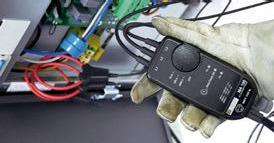
24 minute read
Energy Efficiency
Motorise your energy savings
It’s almost impossible to think of a business that doesn’t use electric motors. In industry, they power the manufacturing processes, and in virtually every commercial building they drive the systems that provide a comfortable working environment. Motors also use a lot of energy. According to the Carbon Trust, a 2.2 kW motor typically costs around £2,300 a year to run. This makes energy efficiency of motors a key concern for every business owner and manager, says Julian Grant of Chauvin Arnoux.
Advertisement
It’s widely reported that motors consume around half of all electricity used worldwide, and that they account for more than two-thirds of the electricity consumed by industry. The actual figures vary a little according to the source, but that really doesn’t matter. The take-home lesson is that, whatever business you happen to be in, you’re almost certain to be spending a lot of money on electricity to power your motors and, in addition, the energy they consume is adding to your carbon footprint. These are two excellent reasons to look at motor efficiency, but how do you go about it?
Paradoxically, the first step doesn’t even involve identifying the individual motors on your site. Instead, it’s to monitor the electrical supply, ideally using a portable energy logger (PEL). Two important things to look for are voltage imbalance between the phases and poor power factor. A voltage imbalance of just a few percent will reduce the efficiency of every motor on your site,
so it’s well worth identifying and correcting. The corrective action may, for example, involve redistributing single-phase loads between the phases so that the phases are loaded more equally.
I won’t go into detail here about power factor, but in summary, the power consumed by a motor (apparent power) is made up of two components: active power and reactive power. You pay for both, but only the real power does useful work. The ratio of the active power to the apparent power is known as the power factor, and the nearer this is to 1.0, the less money you’re spending on useless reactive power.
If a site has a poor power factor, relatively inexpensive equipment can be installed to bring it nearer to 1.0 and cut energy costs. Power factor correction can also be provided for individual motors, although this is usually only worthwhile with large motors, and for groups of motors that usually operate at the same time.
With phase imbalance and power factor out of the way, it’s now time to look at the energy saving opportunities associated with individual motors. Start with your biggest motors first, because this is where you’re likely to be able to make the biggest savings. It will often be worth installing a PEL either temporarily or permanently, as this will provide a lot of useful information. The log will, for example, show exactly when the motor was running, which is important because a good way to waste energy is to leave the motor running when it’s not needed – during tea and lunch breaks, for example.
Data from the PEL will also let you work out whether the motor is oversized. This is a significant issue because the efficiency of a standard induction motors falls as the load on it decreases and, below about 50% of its maximum loading, its efficiency will be decidedly poor. So, if the log reveals that the motor spends its whole life lightly loaded, it might pay for you to fit a smaller replacement.
The PEL, particularly if you leave it in place for a while, will additionally provide you with invaluable baseline data about the power consumed by the motor, which you can later compare with the consumption after you’ve made improvements to make sure that you’re achieving the gains you expected.
Next, look closely at how the motor is controlled. If it has simple startstop control – that is, it’s either running at full speed or stopped – you may well be able to make big savings by fitting a variable speed drive (VSD), especially if the motor is driving a fan or a pump.
Fan and pump systems have to be designed to cope with worst-case conditions. A fan in a building climate-control application must, for example, be able to move enough air to keep the building cool on the hottest day of the year. On every other day of the year, it is shifting too much air and so throttles and dampers are included in the system to reduce the airflow. But with simple start-stop control, the motor still runs at full speed using just as much energy on a cool day as it does on the hottest day!
A much better solution is to fit a VSD so that the speed of the fan is automatically adjusted to give the actual airflow required at any particular time. Assume that this means the fan runs at 80% of full speed for most of the time (which is by no means unusual), the energy it uses is reduced by 50%. Even if it’s only that 2.2 kW motor mentioned in the introduction, this is a saving in energy costs of over £1,000 per year, so the cost of fitting the VSD will be very soon recovered.
In fact, for those who act quickly, there is even a government incentive for fitting approved VSDs. This is the Enhanced Capital Allowance (ECA) scheme that allows the whole cost of purchasing and installing the VSD to

be offset against corporation tax in the year that the work was carried out. Fast action is need, however, as the scheme ends for new product purchases within the next couple of months. You’ll find more details on the website of the Department for Business, Energy and Industrial Strategy.
There’s just space left for a few words about intrinsic motor efficiency. Motor efficiency is classified in line with the IEC 60034-30 standard that was introduced in 2008 and updated in 2014 as IEC 60034-30-1. The motor efficiency classes are designated IE1, IE2, IE3, IE4 and IE5, with IE1 the least efficient and IE5 the most efficient. All AC induction motors placed on the market in the EU since January 1 2017 have had to either meet the requirements of IE3, or of IE2 if they are equipped with a VSD.
The motors you already have may be in a lower category, so is it worth replacing them? The answer is almost certainly no. The more efficient motor will cut your energy bills, of course, but probably not by enough to offset the cost of the new motor over a realistic timescale. The situation is somewhat
different, however, when a larger motor has failed, and the choice is between having it rewound and replacing it. Each case will need to be decided on its merits, but in these circumstances, installation of a new high-efficiency motor may well be justified. It’s worth noting that such a replacement may be covered by the ECA scheme discussed in relation to VSDs.
Just one small word of caution. The vast majority of motors in use today are induction motors, but to achieve ever higher efficiencies, motor manufacturers are now offering new types, including permanent magnet and reluctance motors. If you are contemplating replacing an older motor with one of these, it is essential to confirm the compatibility of the control system and, if one is fitted, the VSD.
Whether you previously knew it or not, a large part of your electricity bill is almost certainly for energy consumed by motors. A little time spent measuring and monitoring the performance of your motor estate can therefore pave the way for very significant savings, which you will be able to quantify and confirm by continuing your monitoring after putting in place your energy saving measures!
Top of the class
When it comes to building management, increasing concerns surrounding climate change are causing young people’s attitudes to shift. Here, Karl Walker, market development manager at Beckhoff, and Jamie Finnan, managing director of TR Control Solutions, explain how students can now take more responsibility for managing the energy efficiency of their own schools and colleges.
It is often argued that school education only teaches you how to pass exams, but not how to deal with real life issues when you become an adult. Learning about volcanoes, the history of our country and foreign languages of course plays an important part in forming a bigger picture of how life on earth works, but when it comes to everyday living, such as applying for a mortgage, running a household and paying bills many of us have had to learn ‘on the job’. But could this be changing?
With the rise of the Internet, and in particular social media over the past decade or two, we have access to more news, images and opinions than ever before, and the effect this has had on society is perhaps demonstrated best by the current crop of school and college students. Thanks to modern technology, students now have the opportunity to manage the energy performance of their own schools and colleges, something Beckhoff has been involved with through its work with ecoDriver from TR Control Solutions.
ecoDriver BEMS is an interoperable supervisory control solution which provides a transparent ‘single pane of glass’ view of a building’s systems. The ecoDriver gateway integrates with building control systems and sensors and securely transfers building operation data to the ecoDriver cloud service. By analysing a building’s energy consumption against its control strategy, ecoDriver BEMS can identify anomalies in a building’s operation, modify as appropriate so that the building operates within its ‘sweet spot’ and maintain the optimised performance level to retain savings.
Beckhoff ’s solutions deliver the gateway technology used to connect a variety of building control services with the ecoDriver BEMS solution. Building control services often supplied by different vendors and manufacturers tend to grow and change over time using a variety of communication interfaces and protocols.
These systems are rarely integrated; for example HVAC, DHWS and lighting controls will generally be independent of each other. Beckhoff ’s interoperable technology can integrate with existing building controls and securely transfer data to the ecoDriver IoT cloud service using the lightweight MQTT messaging protocol.
Locally, Beckhoff technology utitlises numerous communications protocols including BACnet, Modbus, M-Bus, DALI and KNX to name a few, thus providing a supervisory control layer which normalises and centralises services within the ecoDriver BEMS platform. Beckhoff ’s expandable technology also provides the backbone for growth with the option to add more building controls and physical IO.
Climate crisis One of the biggest, or possibly the biggest, news items over the past couple of years has been climate change. In a recent BBC interview, legendary broadcaster and naturalist Sir David Attenborough stated, “The moment of crisis has come”. Those words from a renowned expert carry significant weight however old you are. Add them to the actions and messages of Greta Thunberg, who has captured the imagination of many young people with rousing speeches to world leaders imploring them to reduce our emissions, and it is inevitable that action will be inspired in one form or another.
In February last year school pupils across the UK staged an organised ‘strike’ in a bid to urge the government to do more to tackle the threat of climate change. But there comes a point where strikes and organised marches are not enough. Perhaps if we give students the trust, responsibility and, crucially, the tools to positively affect the environment they occupy, they will learn the skills to make a big difference in the long term. In some schools, this is already taking effect.
School project ecoDriver has been working with schools for 15 years, and with tighter budgets there is increasing pressure to find cost savings wherever possible. A common view is that the cost of utilities is ring fenced within school budgets, e.g. “that is what it cost last year, therefore we need to budget the same +10% for this year, so savings need to come from elsewhere”.
This needn’t be the case, ecoDriver has delivered savings of between 10-51% on school energy consumption. In one example, the school’s actual energy consumption was three times higher than the building design estimate. There was no visibility of consumption profiles for the local premises team, and the BMS schedules, setpoints and exceptions had not been configured correctly.
To resolve these issues, automated main meter data capture and
reporting was integrated using ecoDriver, which subsequently allowed energy profiles to be displayed, reviewed and modified accordingly. A systematic approach to energy reduction was also implemented, which enabled the local premises manager to modify schedules and setpoints. The result was a 41% energy saving in less than four months.
But it is not just about reducing the cost of energy. With their futures at stake, students are becoming the most engaged and focused group when it comes to understanding the need for a significant reduction in CO2 emissions. To give them the responsibility of running their building efficiently, ecoDriver makes a school’s energy consumption visible to students in easy to understand charts, building layouts and reports, which empowers these young ‘eco warriors’ to do what they can to reduce waste. It also stimulates ideas and opportunities for the schools to reduce waste further.
Perfect harmony Returning to the earlier point about schools teaching students about real life situations, by handing them the responsibility of looking after their school’s energy performance they are gaining valuable life experience at an early age that will prepare them well for their future careers.
This is a view shared by Richard Dunne, a former headteacher who founded the Harmony Project in 2018. The Harmony Project recognises the impact of human activity on the natural world, and humankind’s increasing disconnection from nature. Education is one of the sectors in which Richard has applied Harmony and he believes that by rethinking environmental education so that it is at the heart of learning, schools can encourage their students to actively engage with pressing environmental issues at the same time as teaching them valuable life skills.
Richard says, “For the most part, sustainability in education is seen as an add-on. It might be presented as a one-off environmental day or eco week. It will almost certainly be presented outside of the formal curriculum. It may engage the interest of a good many students, but the mere fact that it is not integrated into the broader curriculum means that the opportunities to link learning together are unlikely to be explored.”
He adds, “We need to find ways to bring learning together around purposeful projects and give students a lead role in showcasing the outcomes of their research and the issues they want to address through this process.”
So, are the days of parents nagging their teenagers not to leave their bedroom lights burning when they go out finally over? Perhaps we are seeing the start of a generational revolution different to anything we have seen before. With the technology now available to them, today’s students really can play a leading role in managing their own environment at a local level, and this will have positive repercussions on a regional, national and even global scale now and into the future.
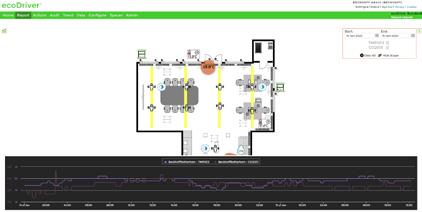
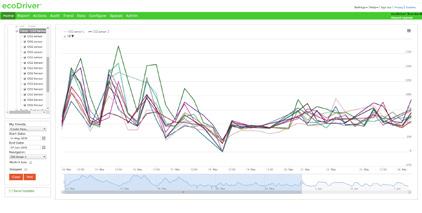
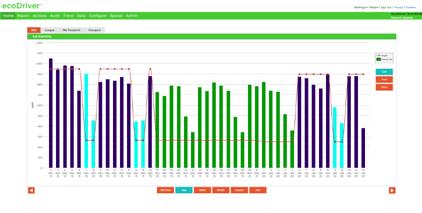

When two become one
Alex Emms, operations director at Kohler Uninterruptible Power, looks at how a UPS and generator can complement one another to form a complete standby power solution.
Operators of any data centre with mission-critical loads must ensure uninterrupted power under all circumstances. However, while the UK Power Network’s electricity network is built to withstand the intense storms that can affect any part of the country at any time, extreme weather can affect overhead power lines. Accordingly, although the organisation has emergency plans and engineers ready to deal with situations as they arise, data centres should also have their own plans in place.
Such plans must include provision for power cuts lasting several hours or possibly days, as well as those of just seconds’ or minutes’ duration. This in turn calls for an on-site generator to back up the UPS, as all battery autonomies are finite, and susceptible to being exceeded by a

sufficiently extended blackout. Additionally, there is no point in having battery autonomy that is not matched by air conditioning that can maintain safe operating temperatures for the UPS throughout the blackout.
The first step is to recognise that UPSs and generators complement one another in operation, and the second is to ensure that they synchronise smoothly and safely when the power fails.
The UPS is the front line If a data centre is regarded as mission-critical, it will almost certainly have an online UPS. During normal, ‘mains OK’ operation, the incoming power flows through the UPS rectifier and inverter components before reaching the load. This means that the load is continuously protected
from mains-borne noise, surges, spikes, brownouts and any other aberrations, as well as short-term power cuts safely within the UPS battery autonomy. Under these circumstances, the UPS is providing full protection without support from the generator, which remains on standby.
However, if the UPS control system detects that an ongoing blackout is becoming a threat to its battery autonomy, it could signal the critical load, allowing it to shut down gracefully within the remaining autonomy. Alternatively, if losing the data processing resource is not an option, the UPS must start interacting with an on-site generator.
The UPS’s role is then to maintain the supply until the generator can start, stabilise and take over seamlessly as the power source. Assuming the generator has been correctly sized for the application, the UPS will accept it as a ‘mains replacement’ for recharging its battery and supplying the critical load until mains power is restored. This period can be indefinite, subject only to continued availability of fuel for the generator.
The generator as a standby power source To correctly specify an optimally matched UPS/generator power protection pair, it’s necessary to look more closely at the generator characteristics and requirements.
The generator converts stored energy – fuel – into electrical energy. It comprises the fuel itself, an engine to develop mechanical energy, and an alternator to convert the mechanical energy into electrical form.
The engine must be well maintained with an adequate fuel supply at all times. The battery must be healthy enough to assure reliable starting on demand, while coolant and oil levels should be regularly checked.
The engine drives an alternator, which converts mechanical power into an alternating supply of typically either 230V single-phase or 400V three-phase in the UK. This output voltage’s amplitude and stability is controlled by an Automatic Voltage Regulator (AVR) while the frequency – usually 50 Hz in the UK – is determined by the engine speed. Engine speed and supply frequency are set by a governor, which regulates the fuel supply to the engine; more fuel increases speed and frequency.
Both mechanical and electronic governors are available. Mechanical governors, although lower cost than electronic types, are less responsive and provide less stable engine speed and voltage frequency regulation. An electronic governor counts teeth on the alternator’s flywheel as it rotates and regulates the fuel flow accordingly. Electronic governing is highly responsive and offers very stable speed and frequency regulation; accordingly, it is usually specified for any standby generator intended for pairing with a UPS system.
A UPS standby generator should have a mains-powered engine water heater and battery charger. It must also communicate when it starts and stops in response to mains supply failure and subsequent restoration. This is usually handled by an Automatic Mains Failure (AMF) panel that includes the necessary signals. Fig.1 shows how an AMF panel is used with a generator as part of a protected power installation.
Fig. 1: Typical protected power installation with AMF panel, mains failure detection and changeover
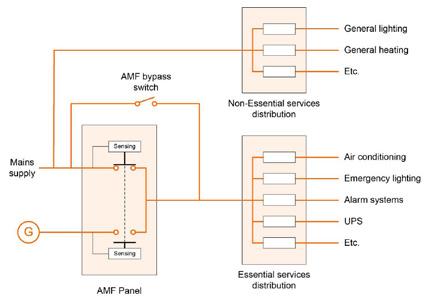
To avoid the AMF starting the generator for every short supply aberration, it is usually set to operate only if the mains fails for an extended time of typically two to 10 seconds. Similarly, the AMF should not stop the generator and switch the UPS back to mains supply immediately after it is restored; the reconnection may be part of the utility company’s fault location procedure or the result of an automatic breaker operation. The fault may still exist, causing the supply to be disconnected again almost immediately. Accordingly, most AMF-controlled generators are set to continue to supply power for at least two minutes after the utility supply is restored.
The UPS can sense the brief power interruptions during changeovers at both the beginning and end of the blackout, and uses its batteries to prevent these interruptions reaching the load.
Any mains changeover solution should also consider the method used to switch the neutral conductor during the mains failure. It is usual to employ four-pole switching in the UK; short interruptions in the neutral plane are accepted as many sites now have generators and hence fourpole changeover.
Generator sizing To ensure the generator performs reliably as a power protection component, it must be correctly sized as well as matched to the UPS. In fact, it should be oversized, especially as it usually supports more equipment than the UPS; air conditioning to cool the equipment as well as emergency lighting, communications and alarm systems.
As a ‘rule of thumb’, 1.5 times the nominal capacity should be allowed for transformerless UPSs, and three times the nominal air conditioning running capacity should be allowed for the air conditioning.
Conclusion If a data centre is providing a critical ICT resource that has to remain online under all circumstances, then an on-site generator must be provided to back up the UPS if a long-duration blackout occurs. Additionally, for successful operation as part of the power protection strategy, the generator must be carefully matched to the UPS characteristics and sized sufficiently to handle all the emergency power needed during a blackout.
The right fit
Mark Coughlin, applications manager for reserve power at EnerSys, highlights the importance of choosing the right battery for your UPS.
Today’s data centres depend on uninterruptible power supplies (UPS) to provide clean, continuous power throughout the facility’s entire operational life. While the mains supply is available, the UPS protects the data centre’s sensitive information and communication technology (ICT) equipment from any power aberrations appearing on the incoming power feed. If the supply fails, the UPS battery must take over instantly, supporting the load until either the mains is restored, or a generator can be started, or the data centre systems can be shut down safely.
A UPS battery’s ability to store energy reliably and efficiently during normal operation, making it immediately available to the load during a mains failure, is critical to data centre security. In this article, we review the key battery technologies currently available, to inform commercial and technical specifiers responsible for battery selection.
We will first look at how data centre evolution is affecting the demands placed on batteries. Then, compare lead-acid, the pre-dominant battery chemistry used within data centres, with Lithium-ion (Li-ion), which has been generating rising interest in recent years. Finally, we will examine why data centre operators should consider advanced Thin Plate Pure Lead (TPPL) technology to optimise their UPS and power system performance.
The evolving data centre landscape Data centres today experience rising numbers of power outages and grid fluctuations while, simultaneously, their workload is expanding. These factors increase pressure for ‘best in class’ technologies and reliable power.
UPS batteries are directly impacted by reduced autonomy times, now typically between 30 seconds and five minutes, compared with historical averages of around 15 minutes. This is because of the shorter times needed to start up generators and switch loads. Fast recharge times are also desirable, quickly readying batteries to support further power outages.
Energy efficiency now concerns all data centres, not just because of costs, but also through pressure to reduce carbon footprint. There is also growing interest in using UPS battery assets for revenue-generating energy storage applications. Battery technologies and trends The two UPS backup battery chemistries that currently dominate the data centre industry are lead-acid, which represents over 90% of the UPS market share, and Li-ion, which is attracting increasing interest due to its purported performance benefits and high visibility through its use in electric vehicles.
Compared to traditional VRLA equivalents, Li-ion offers a high cycle life, together with significant size and weight reduction. Li-ion batteries also have high charge efficiency, with excellent partial state of charge tolerance – in fact, partial charge is preferred for long cycle life while operation in float conditions at full state of charge is avoided. Li-ion self-discharge rate is also low, resulting in prolonged storage shelf life. Finally, it has good high and low temperature performance, and no gas emissions.
However, Li-ion has challenges along with its benefits. Despite historical cost reductions, pricing remains a barrier for many users. Furthermore, although space-saving may be important within data centres, weight reduction, which Li-ion batteries offer, is seldom critical. Similarly, the high cycling capability of Li-ion isn’t essential to UPS applications, where batteries mostly float at near full state of charge.
While considered a safe technology, any Li-ion solution, unlike lead-acid, must include a battery management system (BMS) to ensure safe charging and discharging. This increases complexity, and requires users to thoroughly understand Li-ion technology. However, the BMS provides built-in diagnostics, which identify most problems and allow minimal maintenance.
Additionally, the MTBF (Mean Time Before Failure) of the electronic components factored into Li-ion calendar lifetime calculations must be considered. 15-year lifetimes are claimed, but service life is not field-proven. By comparison, advanced TPPL, with 12+ years design life, provides eight to 10 years’ service life, while traditional VRLA 10-year design life batteries typically provide five to six years’ service life.
To fast-charge Li-ion, higher charging capacity, with increased cost, may be required. Also, the charging architecture would often need replacing or changing to support different Li-ion battery charger voltages, so two different UPS rectifier types would be required across a data centre deploying both Li-ion and lead-acid batteries.
For delivery, Li-ion faces legislative shipping restrictions, while lead-acid batteries, including AGM and TPPL, are classified as non-hazardous for all transportation modes. Then, at end-of-life, lead-acid has inherent value, and is about 95% recyclable by a very well-established network of smelters; this possibility, however, is not mature for Li-ion.
TPPL: Optimised performance without the drawbacks While Li-ion has been slow to replace lead-acid in data centres, advanced TPPL technology offers the best of both chemistries.
As a lead-acid based battery technology, TPPL is reliable, well-proven,
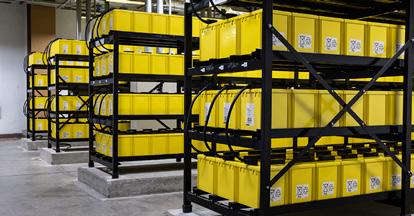
and easy to transport, handle and recycle. Crucially, advanced TPPL technology significantly improves energy efficiency, by providing up to 43% energy reduction compared with traditional VRLA batteries through reducing float current requirements. Further energy savings accrue as it can operate, within warranty, at elevated temperatures, reducing air-conditioning requirements.
Meanwhile, advanced TPPL battery technology reduces data centre vulnerability to multiple mains blackouts, through very short recharge times and time to repeat duty. For example, with 0.4C10 A charging current using fast charge methodology, TPPL can be fully recharged, following a one-minute discharge to 1.6 Vpc, in 2.5 hours, and ready to repeat duty in 22 minutes.
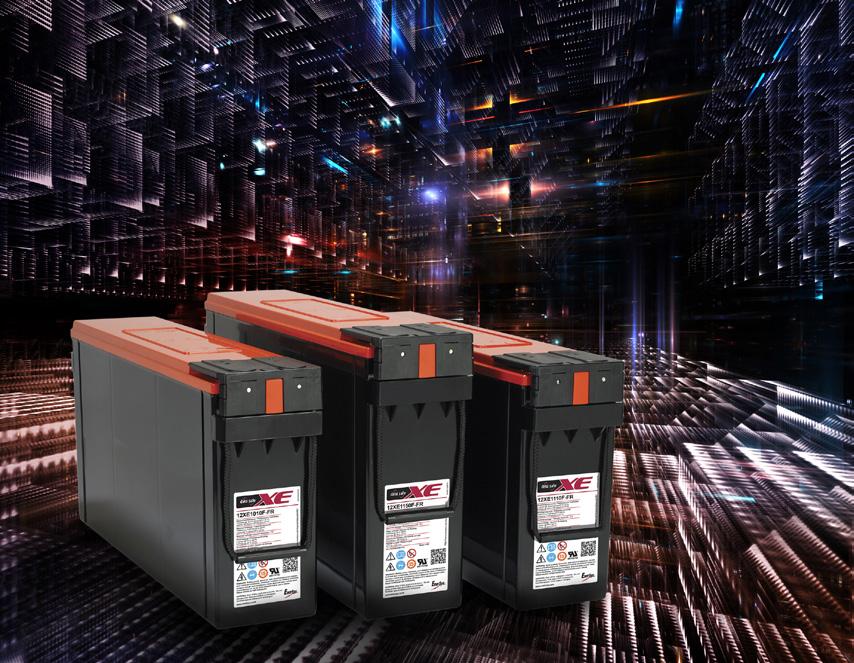
Battery replacement costs are also reduced through low internal corrosion rates, yielding a service life 25% longer than for traditional VRLA. Additionally, storage life is increased from six to 24 months due to low self-discharge rates.
Advanced TPPL technology is used today in many demanding critical applications, including UPSs within data centres. Autonomies of under five minutes are supported.
What of the future? Lead-acid technology is expected to dominate the market for at least the next few years, although Li-ion activity will continue to grow. In particular, applications requiring high cycling will be seeking advanced TPPL or Li-ion solutions.
Depending on the application, Li-ion could be the preferred battery type. Nevertheless, before opting for Li-ion, a full consideration of the requirements should be undertaken. This should reflect the Total Cost of Ownership, with the benefits and challenges of Li-ion compared against other available technologies, including TPPL.
Irrespective of the technology chosen, battery monitoring systems will become increasingly popular, due to the battery condition visibility and predictive maintenance opportunities that they provide. This will also bring UPS applications into the Internet of Things (IoT) environment, making them visible as components of the larger data centre infrastructure.




